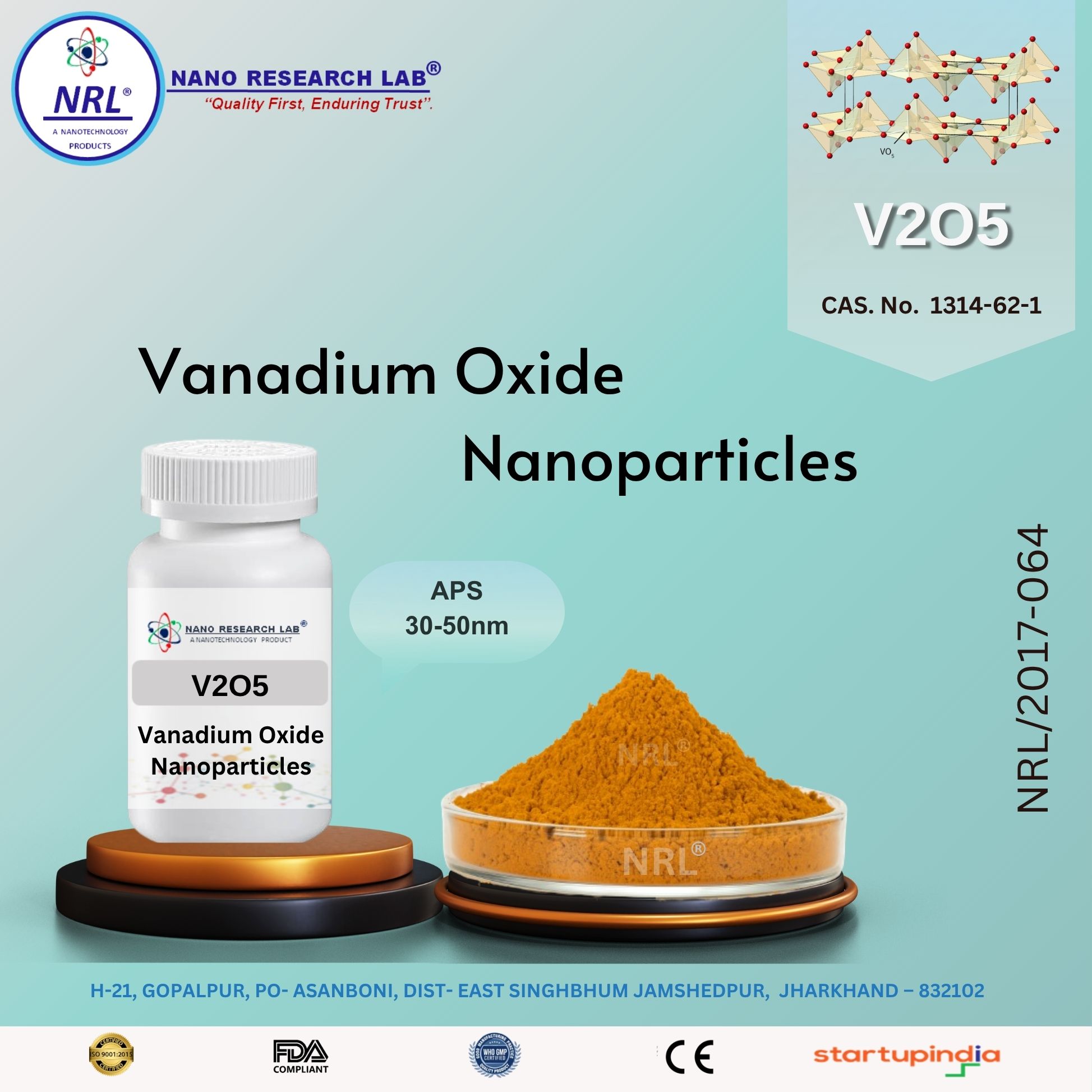
Vanadium Oxide Nanoparticles/NanoPowder ( V2O5, 30-50 nm, purity 99.5%)
₹4490.00
Vanadium Oxide Nanoparticles / Nanopowder (V₂O₅, 30–50 nm, Purity 99.5%)
⚙️ Technical Specifications
Property | Specification |
|---|---|
Product Name | Vanadium Oxide Nanoparticles / Nanopowder |
Chemical Formula | V₂O₅ |
Purity | ≥ 99.5% |
Particle Size | 30–50 nm |
Appearance | Reddish-orange fine powder |
Crystal Structure | Orthorhombic |
Density | 3.36 g/cm³ |
Melting Point | 690°C (decomposes) |
Solubility | Insoluble in water, soluble in acids and alkalis |
Morphology | Spherical / rod-like nanoparticles |
CAS Number | 1314-62-1 |
🌟 Key Features
High purity (≥99.5%) with uniform nano-size (30–50 nm)
Excellent catalytic activity due to high surface area and redox properties
Strong electrochemical performance for battery and supercapacitor applications
Thermally and chemically stable under operating conditions
Good semiconducting and optical properties
Biocompatible for certain industrial and research applications
Easy to disperse in solvents, polymers, and ceramic matrices
🔬 Applications (in Detail)
1. Catalysis
Vanadium pentoxide nanoparticles are widely used as catalysts in chemical and industrial processes.
Used in oxidation of SO₂ to SO₃ in sulfuric acid production.
Applied in oxidation of hydrocarbons, polymerization reactions, and photocatalytic reactions.
Serves as a catalyst support in heterogeneous catalysis.
2. Energy Storage & Conversion
V₂O₅ nanoparticles are important in electrochemical energy storage devices.
Used as cathode material in lithium-ion batteries for high capacity and cycling stability.
Applied in supercapacitors for fast charge–discharge cycles.
Acts as an electrocatalyst in fuel cells and redox flow batteries.
3. Sensors
Utilized in gas sensors for detecting NH₃, H₂S, CO, NO₂, and other gases.
High sensitivity due to large surface area and fast electron transfer properties.
Suitable for environmental monitoring and industrial safety systems.
4. Electronics & Semiconductors
Exhibits semiconducting behavior with good optical properties.
Used in thin-film transistors, photodetectors, and electrochromic devices.
Enhances conductivity and performance in nanoelectronic applications.
5. Photocatalysis & Environmental Applications
Serves as a photocatalyst for organic pollutant degradation under visible light.
Applied in wastewater treatment and air purification.
Can be combined with other nanomaterials to enhance solar-driven photocatalysis.
6. Ceramics & Coatings
Incorporated in ceramic glazes, coatings, and composites for color and functional properties.
Improves mechanical strength, thermal stability, and chemical resistance in composite materials.
